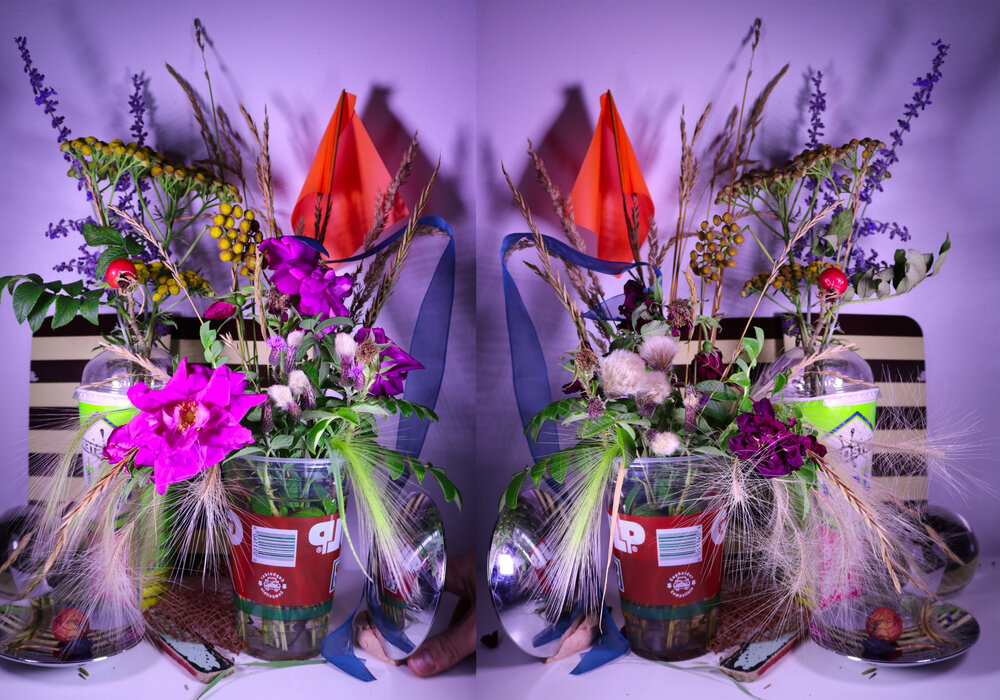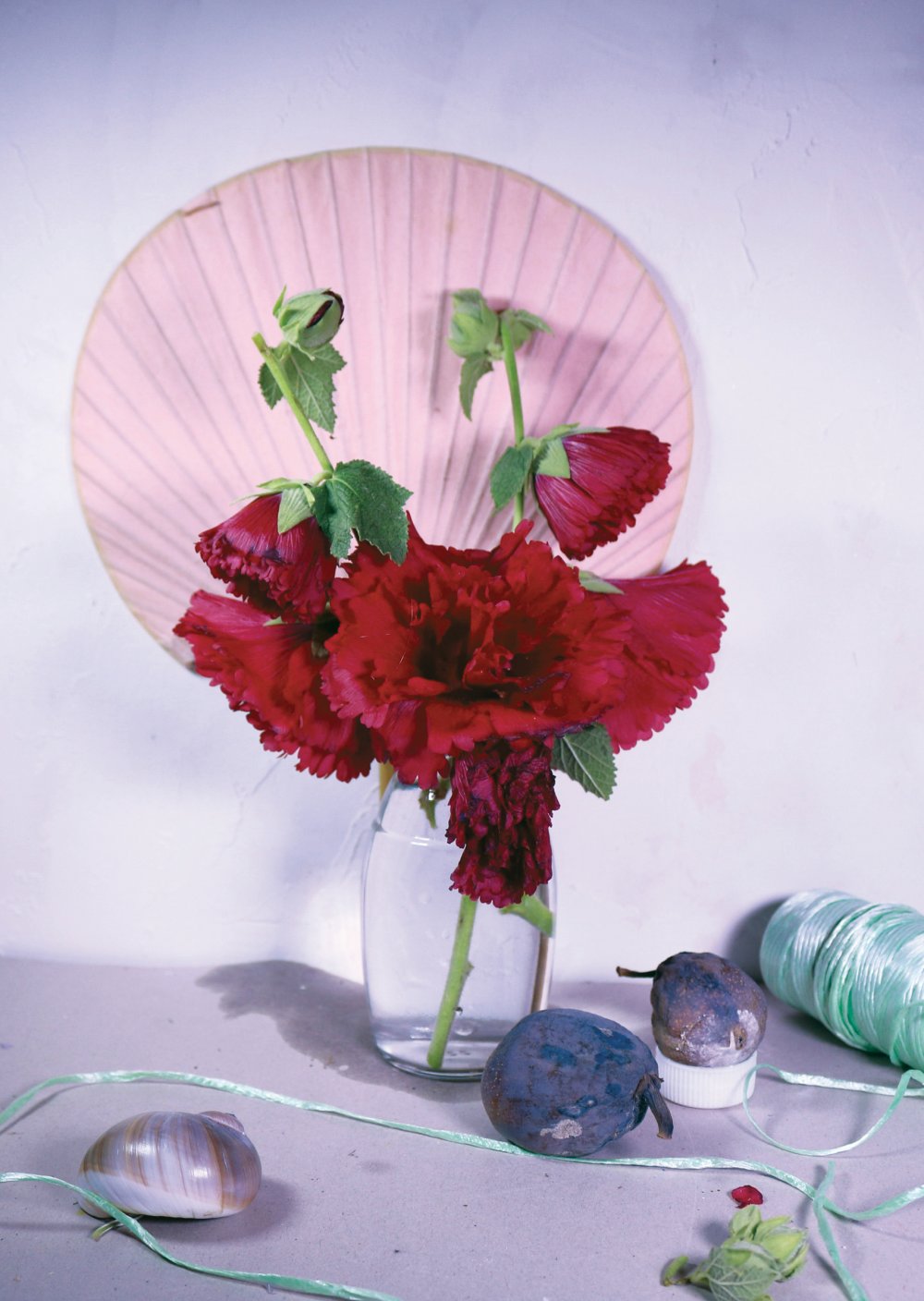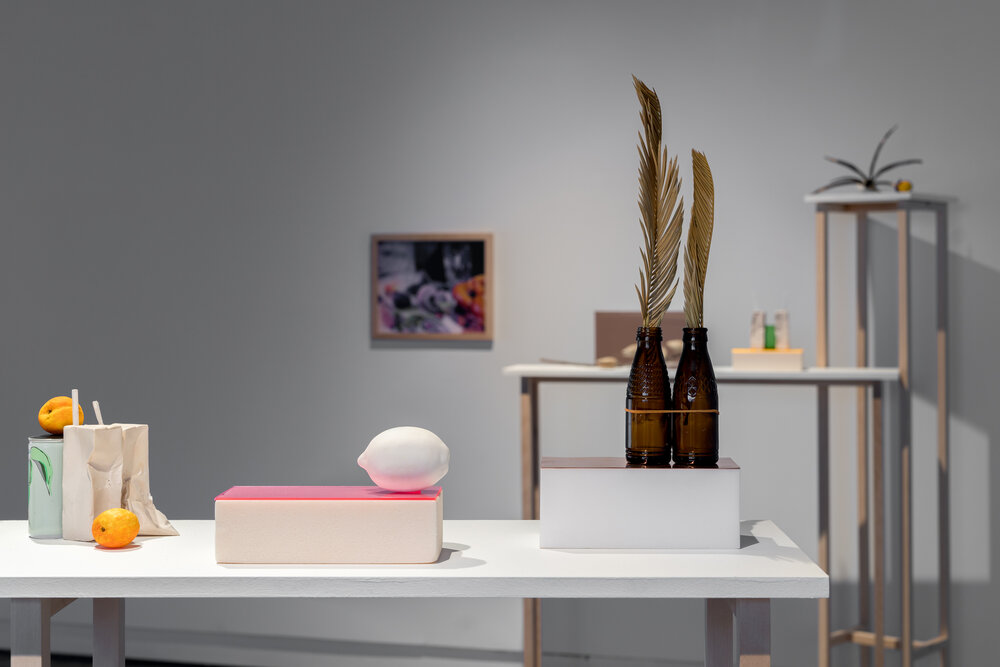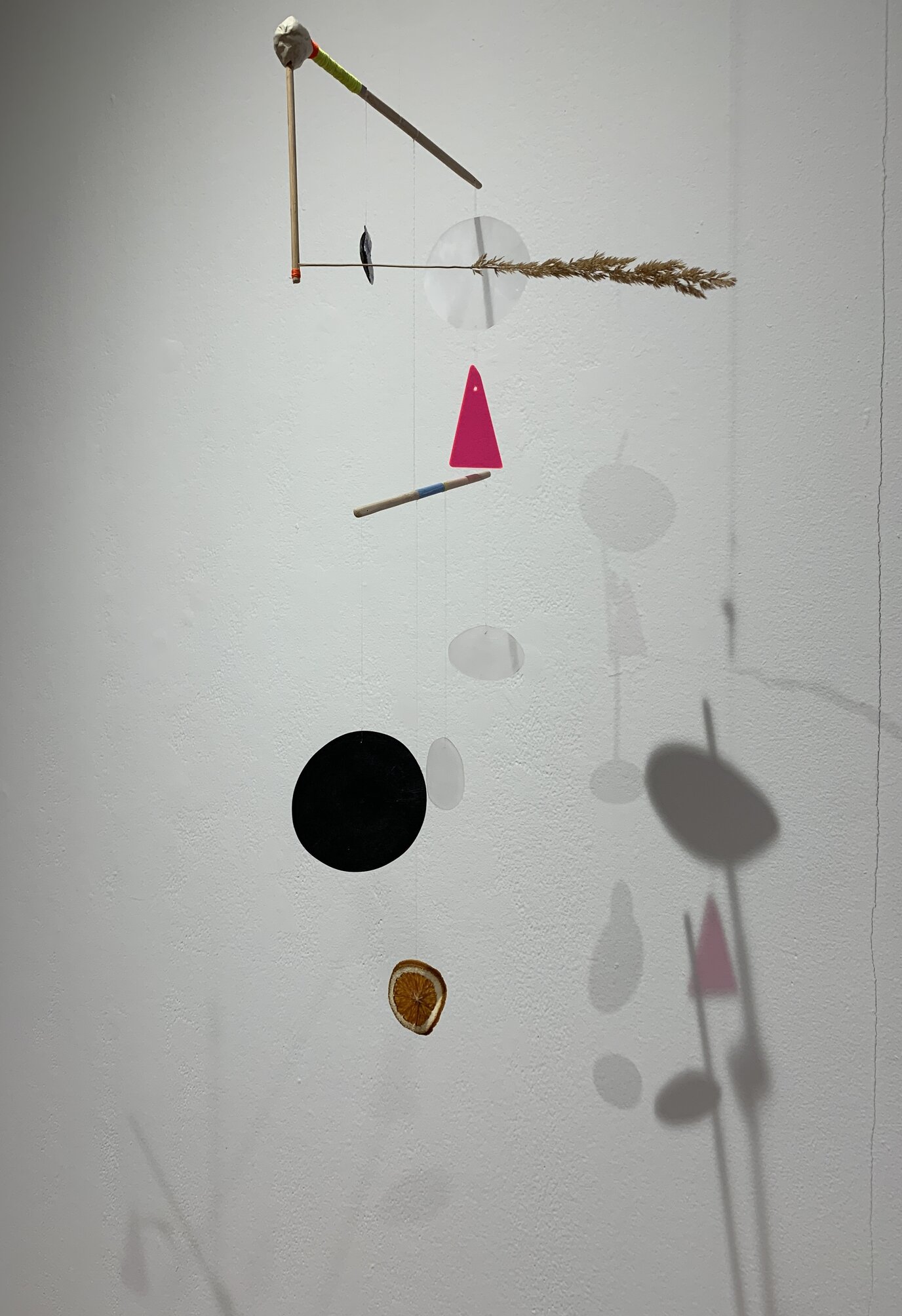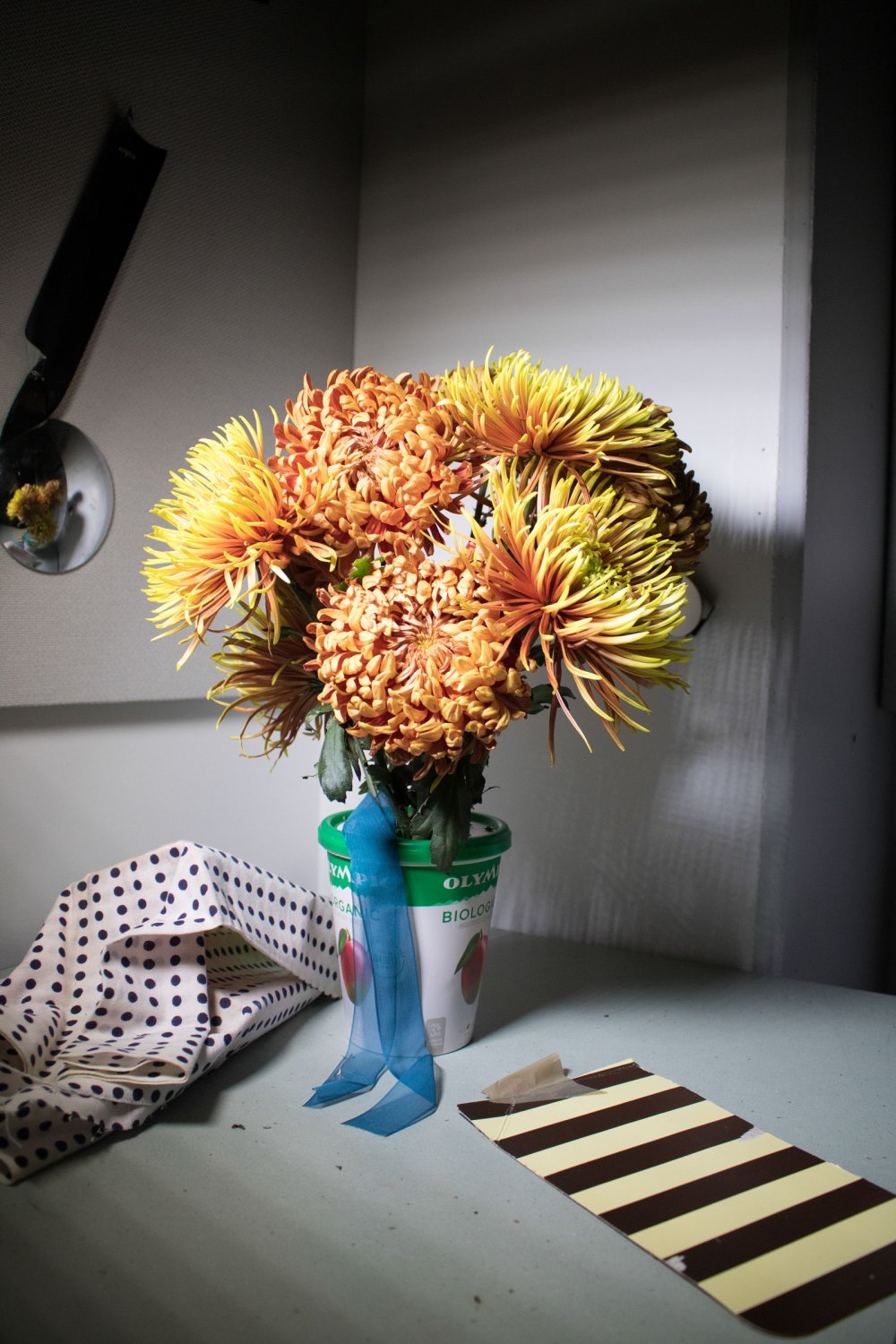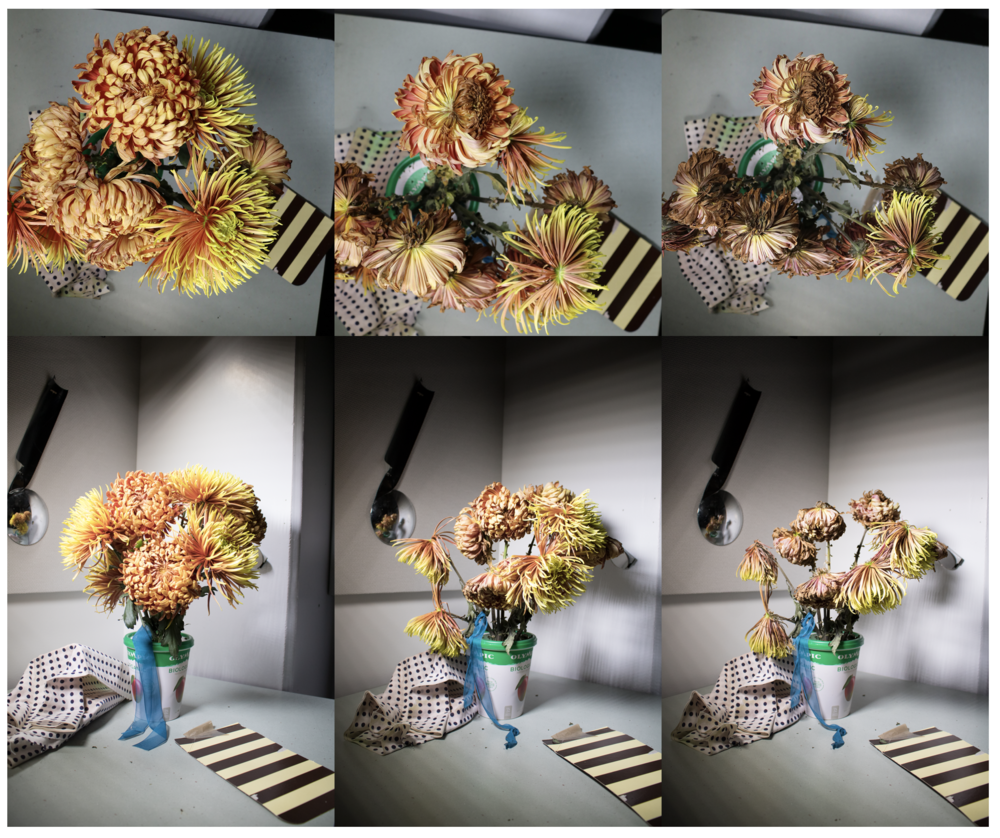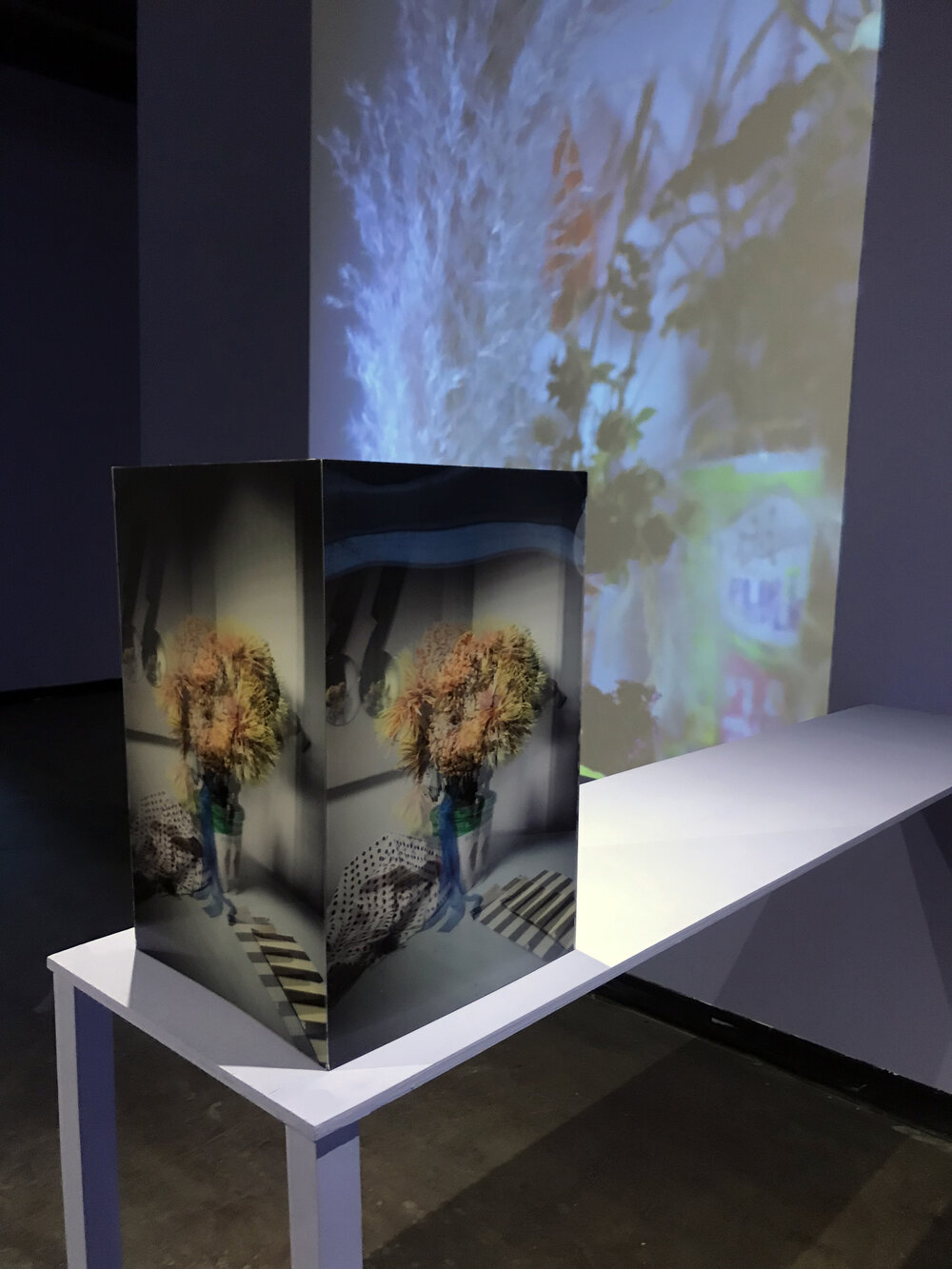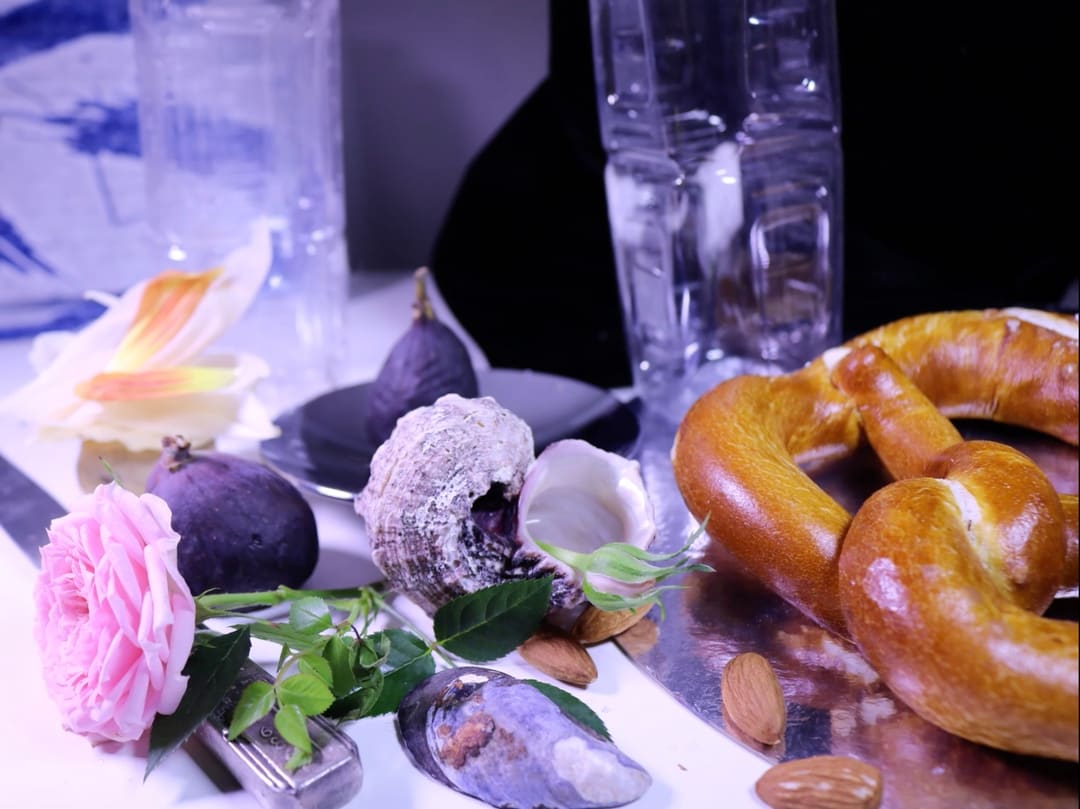Belliveau’s still life installations are an eclectic combination of found objects, sculptures, 3D prints, and lenticular prints. My favorite surprises among the objects found in this exhibit include: flowers displayed in a yoghurt tub, a dried orange slice, seashells, 3D printed models of fruits including a pure white lemon, and a single bronze nut.
Installation view of Alone in the House, Still Life with Clarice Lispector,Gallery 44
While walking through this exhibit I asked myself, what is it about Belliveau’s pieces that make them so aesthetically pleasing despite being made up of ordinary natural and synthetic objects? My conclusion was that Belliveau’s found objects are of both high and low materials, made up of natural and man-made materials which become art because they are chosen and placed, which brings agency to the kinds of items that are thrown away; the kinds of objects that are forgotten. Belliveau explained in her artist talk that her still lifes are highly influenced by her time in Japan where she learned Ikebana, the art of flower arranging and Sampuru, the practice of making fake food. Belliveau’s training in these disciplines clearly comes through in her work, as with graceful precision and meticulous choice, Belliveau gives objects a strong presence through their placement.
Installation view with Still-life Itoshima (top) & Still-life with Fallen Fruits (bottom) from Table #1
In her artist talk, Belliveau also commented about working on the project during quarantine. She explained that being confined to her living space brought to her attention her limited access to objects; that she had to use items inside versus outside of her home. She recalled that on some days the only things that came through her door were take-out boxes, which have been integrated into the installations. For instance, Belliveau’s mobile installation, Prairie-studio practice for self-isolation, hangs collected objects from the ceiling with strings, including sanded down take-out containers, which gives the work liveliness and movement. Belliveau said that the mobiles acted as a form of company, as she shared her space with a sole house plant. It is then fitting, as she mentions, that this exhibition is titled Alone in the House. The works are a culmination and memorialization of the items that gave her company during a time of isolation.
Prairie-studio practice for self-isolation. Photo: Olivia Musselwhite
Belliveau explained that her time lapses collaborate with time, enabling the observance of living things that perform in front of the lens. It seems that Belliveau treats time as an independent entity, one that she leaves to its own devices and artistic choices. The time lapses are projected onto the walls of the gallery, demanding attention from the viewer with their monumental size. A section in the time lapse, Gift features the decay of flowers inside a yoghurt container which allows the viewer to see the flowers’ last dance before wilting completely.
Gift (When I say I love you, I am loving me in you), 2020, lenticular print (above) and screen-shot (bottom)
This exhibit is highly reliant on one being in the presence of the objects. The lenticular still life prints are only fully understood by the viewer who walks around them. Lenticular prints have the unique quality of being made up of multi-layered stills, so when one moves past the work the visible layer changes, allowing one to transition through the stills as the viewing angle changes.
Latitude
The effervescent quality of the prints enables the viewer to see across a span of time and one can even become caught between moments. If the viewer were to stop at a certain point when walking the path of Thistle/Bungalow, they can see both the life and death of the natural forms at the same time. The photo below was taken when I was in one of these transcendent moments.
Thistle/Bungalow, (Amiskwaciwâskahikan/Edmonton), 2020, lenticular print. Photo: Olivia Musselwhite
Belliveau’s inspiration is drawn from the writings of Clarice Lispector. According to the exhibition catalogue, Lispector writes in an interior monologue that follows a natural stream of consciousness and “in Lispector’s stories, time does not exist as a linear chronology, but as an almost tangible, flexible material that inconsistently folds in and out of itself”. Belliveau’s lenticular prints exhibit the same qualities as Lispector’s writings, with time no longer being linear, but easily manipulated by the viewer whose back and forth movements in the physical space also moves them back and forth in time.
Still life with Pretzel (After Clara Peeters), 2020, lenticular print
Alone in the House, Still Life with Clarice Lispector is rich with details to contemplate as the viewer finds another point of interest with each new look. Belliveau talked about her works and how they are connected to the domestic sphere and the practice of food preparation which has long been considered women’s work. Belliveau revisits these aspects through her distinctive still lifes and goes beyond traditional still lifes through her chosen mediums.
Olivia Musselwhite
Images are courtesy of the artist
*Exhibition information: Elisabeth Belliveau, Alone in the House, Still Life with Clarice Lispector. The exhibition is part of Scotiabank CONTACT Photography Festival, September 11 – October 25, 2020, Gallery 44 | Centre for Contemporary Photography, 401 Richmond Street West, Toronto. Gallery hours: Tue – Sat, 12 – 5 pm.

